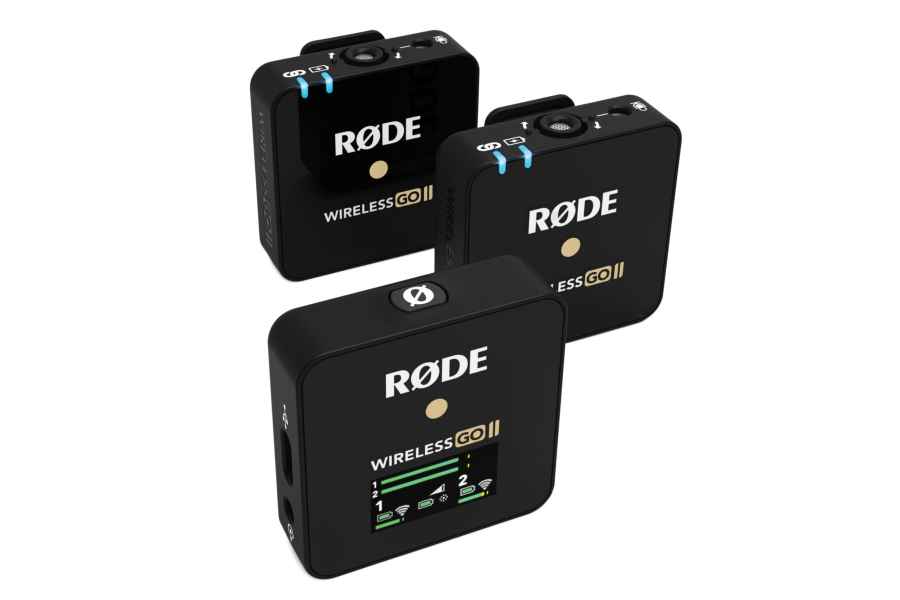Rode Wireless Go II at a glance:
- Dual channel
- 200m range
- Internal batteries with 7 hours life
- Onboard recording
- Safety channel available
- www.rode.com
Like the original Wireless Go, the Wireless Go II is a very compact wireless microphone system that’s designed for use by videographers. However, in a major upgrade on the original, the Wireless Go II has two channels for recording and the kit comes with a receiver and two transmitters rather than one.
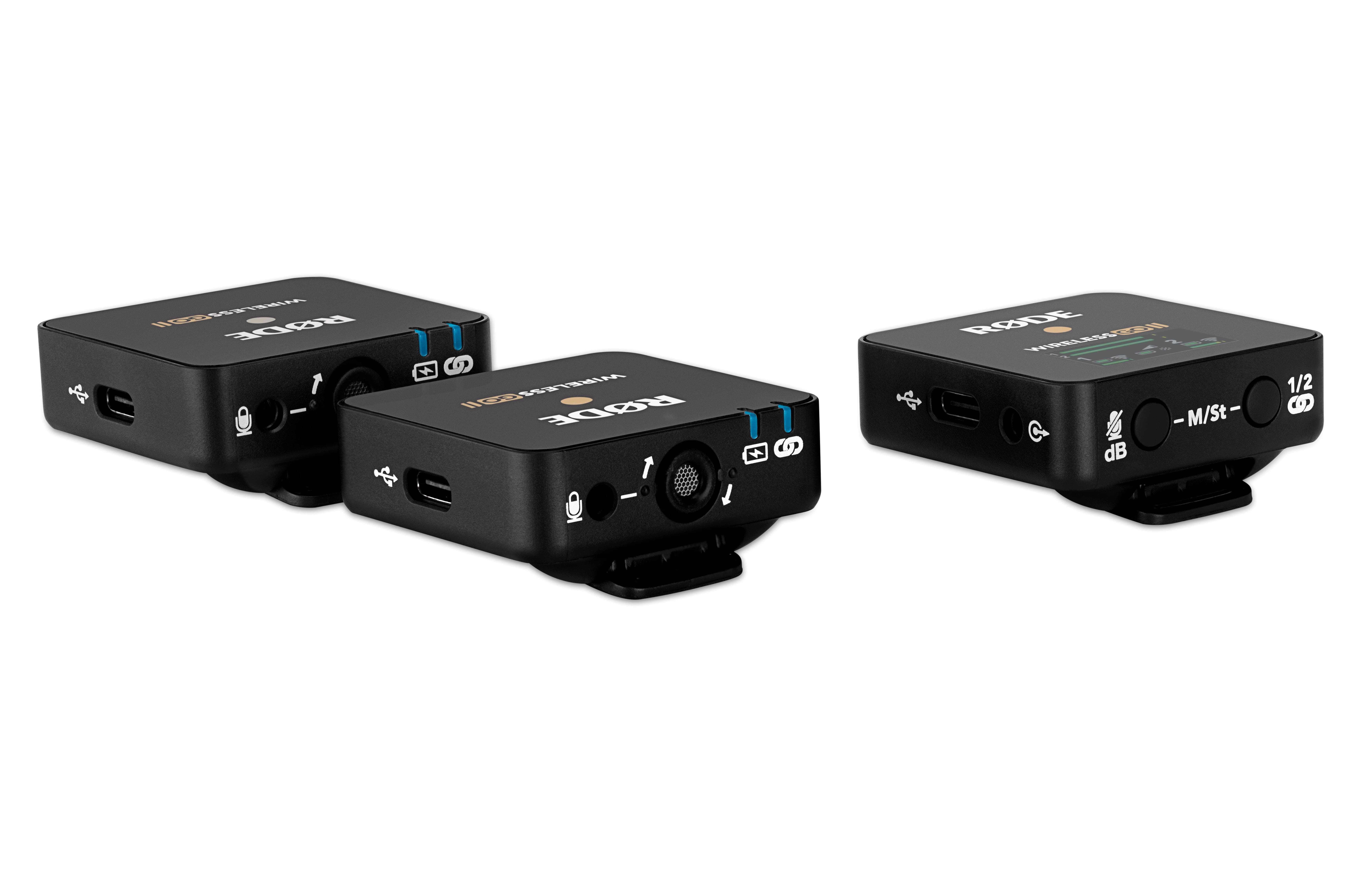
Each of the transmitters features an omnidirectional microphone built-in
Rode Wireless Go II key features:
- Built-in microphone: Both of the transmitters have a built-in mic and 3.5mm port to connect an external unit.
- Cable connection: Rode supplies a TRS to TRS cable to connect the receiver to a camera’s 3.5mm mic port.
- New-fit windshield: Thanks to a new bayonet mount, the Wireless Go II’s furry windshields fit a lot more securely to the transmitters than the original Wireless Go’s.
- Clip-and-go: All three units have a clip, that enables the transmitters to be snapped onto clothing and the receiver to be slid into a camera hot shoe.
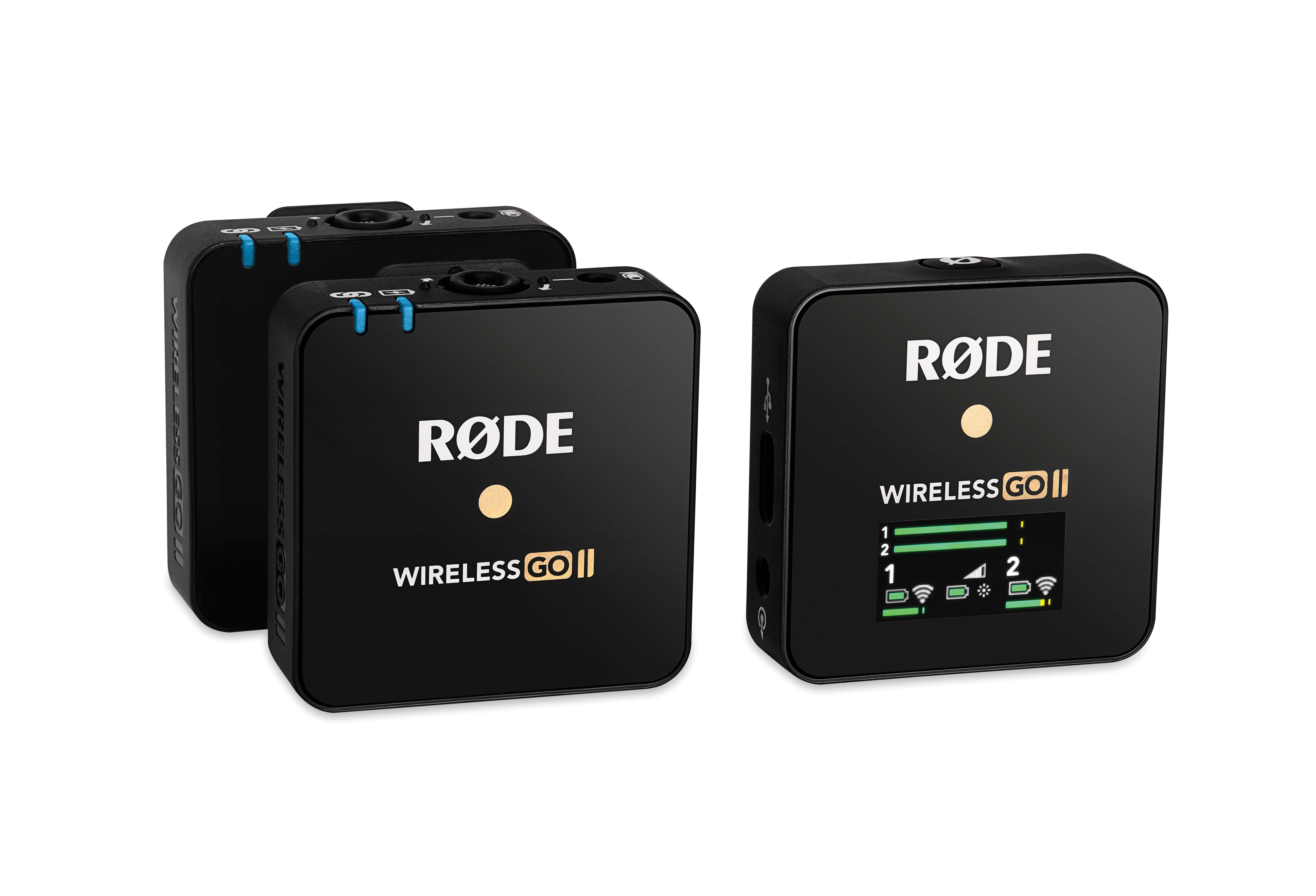
The Rode Wireless Go II features a 200m working range
Each of the transmitters has an omnidirectional microphone built in and they send the audio to the receiver using Rode’s Series IV 2.4GHz digital transmission with 128-bit encryption. Provided that there’s line of sight, the receiver can be up to 200m away and it will relay the audio to the camera or other recording device that it’s connected to.
The receiver and transmitters connect very quickly after they’re both powered up. However, in case the signal should dip out, each transmitter has onboard recording which is activated automatically as soon as the transmitter is turned on.
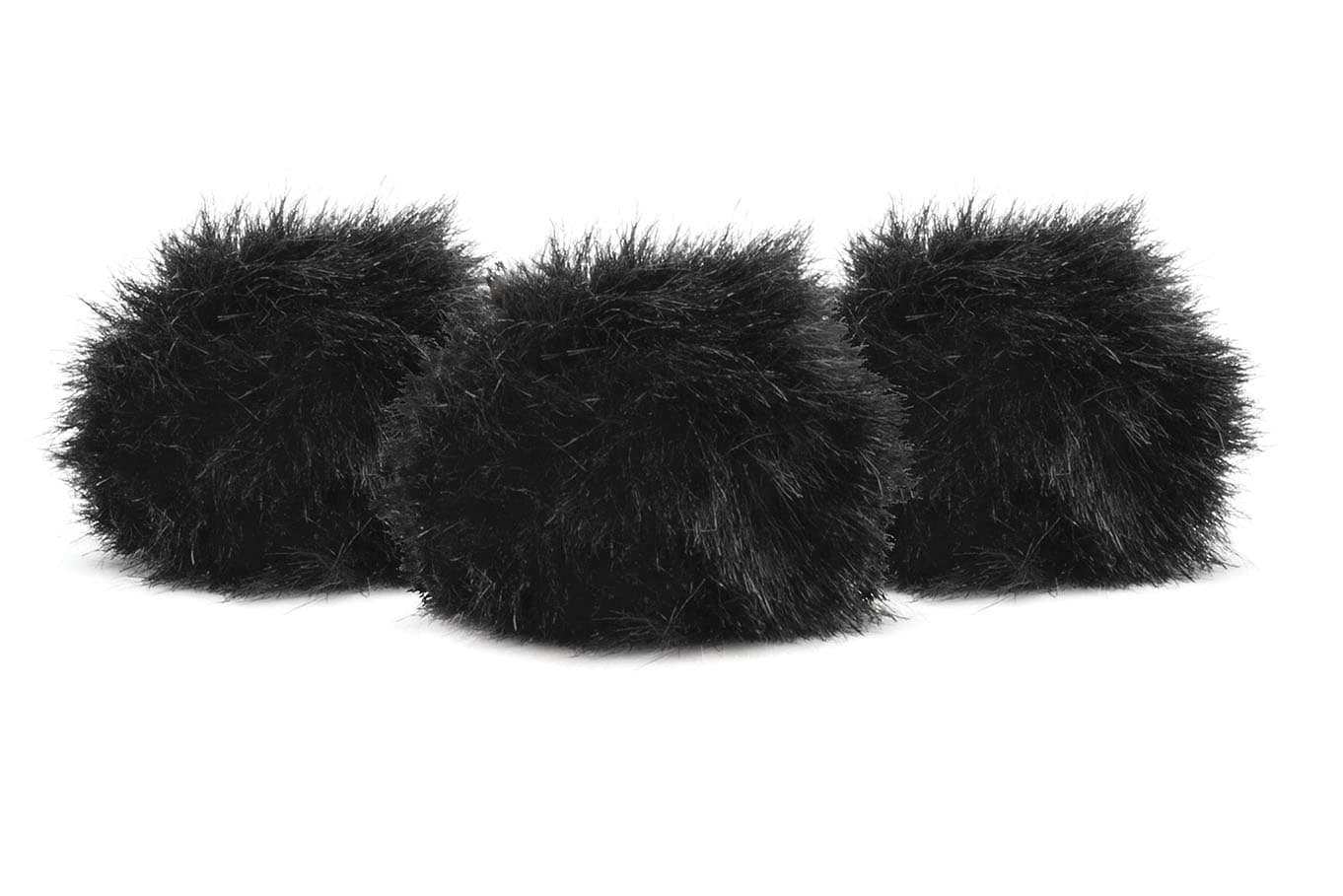
The furry windshields fit a lot more securely to the transmitters than the original Wireless Go’s
It operates even if the receiver isn’t powered up or in range. When it’s set to capture the highest quality audio, a transmitter can record for around seven hours. Switch to compressed audio and you get about 43 hours of recording.
If the Wireless Go II is set to record in ‘Split’ mode, the feeds from the two transmitters are recorded to separate channels, which means they can be treated separately in post-capture processing – you can cut one side of a conversation if you want.
However, if ‘Merged’ mode is selected, the signal from the two transmitters will be mixed (this is also the best option to use if you’re just using one transmitter) and the safety channel feature becomes available. The safety channel sets the Wireless Go II to record a second channel at -20dB lower than the main channel. That’s ideal when there may be sudden loud noises.

All three units have a clip, that enables the transmitters to be snapped onto clothing
The transmitters have just one button, which as well as turning them on or off, can be used to mute the mic or dim the LED. In addition to a power button, the receiver has two control buttons and they enable one or both of the transmitters to be muted and the recording gain level to be set.
Pressing both receiver buttons switches between Merged and Split mode. Other advanced settings such as the safety channel, fine gain control and onboard recording are activated via Rode’s new app for Windows and Apple computers, which is called Rode Central.
Rode Central
Rode’s new free software, Rode Central facilitates firmware upgrades and advanced feature activation.
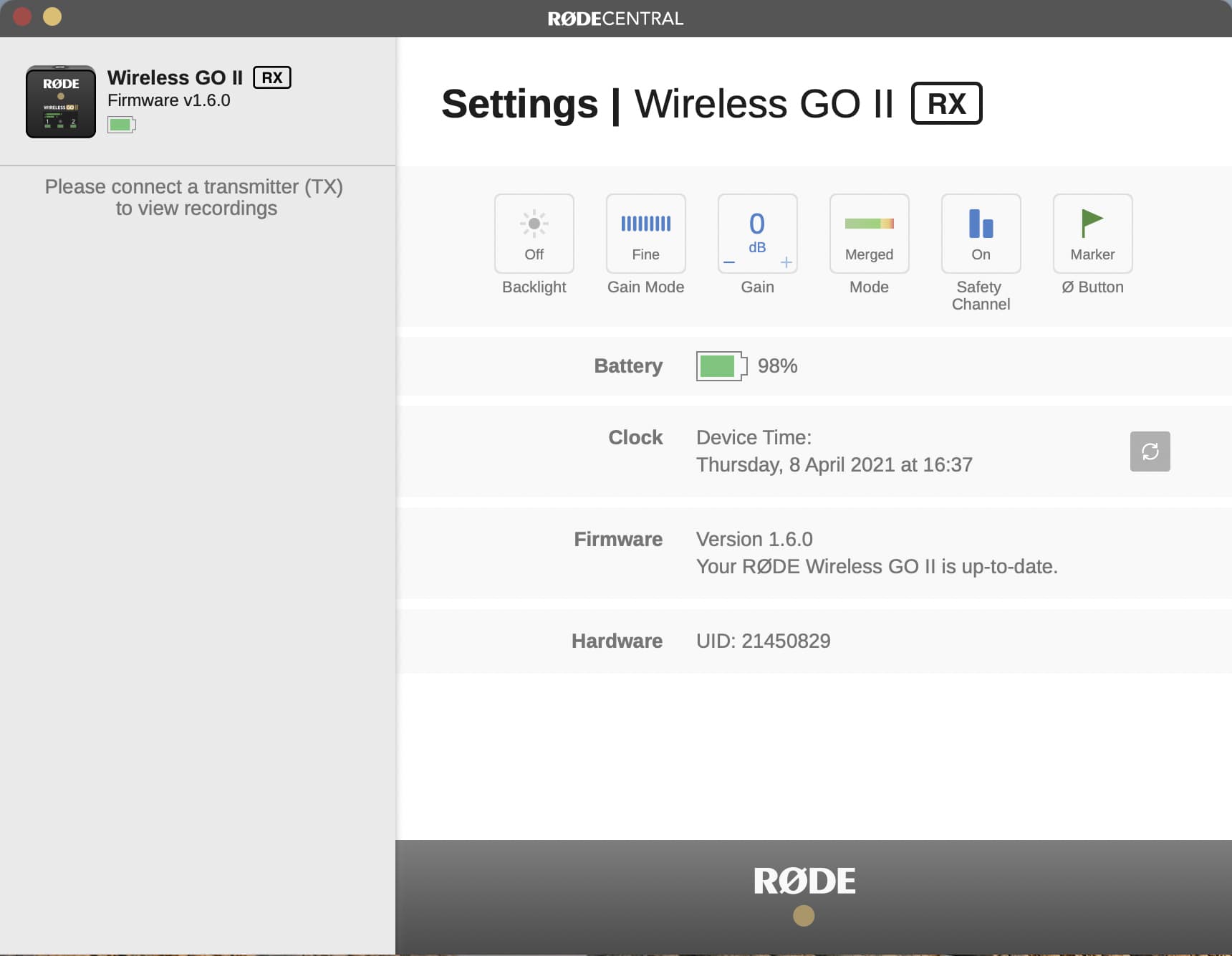
Firmware can be easily updated from Rode’s new app
The software quickly recognises a unit once it’s connected via one of the three supplied USB-C cables and alerts you if there’s a firmware upgrade. Large clickable icons make the software very easy to use.
Rode Wireless Go II: Our Verdict
Rode’s Wireless Go II builds on the original Wireless Go but has more than double the range, dual channel recording, onboard recording and a safety channel.

Rode’s Wireless Go II is an improved wireless microphone system that videographers will highly approve of
Despite these upgrades, it’s still really easy to use, making it one of the most attractive microphones around for recording interviews, vlogging audio or ambient sounds.


